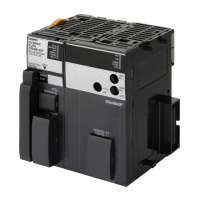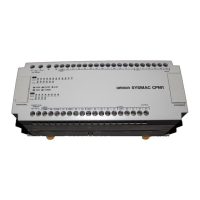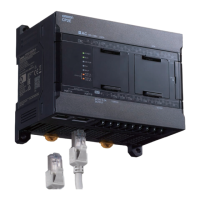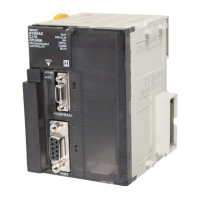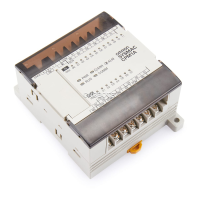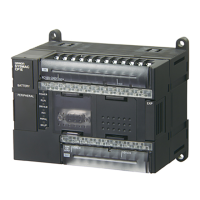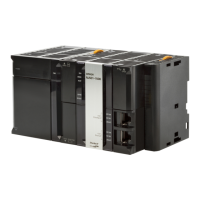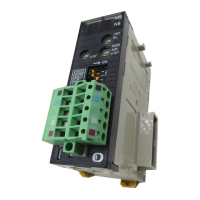4-5
4 Data Exchange with the CPU Unit
CJ-series PROFIBUS Master Unit Operation Manual for NJ-series CPU Unit (W509)
4-1 Data Exchange with the CPU Unit
4
4-1-2 Accessing From the User Program
From the user program, various types of information are exchanged using AT specified device vari-
ables for CJ-series Unit that are allocated to the I/O ports, and AT specified user-defined variables
that are allocated to slave allocation areas.
Use I/O Map in Sysmac Studio to allocate device variables for CJ-series Unit to the I/O port. Specify
variable names using one of the methods shown below.
1. Select and allocate existing variables.
2. Input a new variable name.
3. Automatically create with "Device variable creation".
The following shows the structure of a variable name created automatically with method 3.
For details on Device Variables for CJ-series Unit, refer to the following:
4-2 Device Variables for CJ-series Unit (Software Switches, Statuses)
In the explanations throughout this manual, the default device name automatically created is used
as the device variable name for CJ-series Unit, for example *_MstrOperateCmd.
For details on the CJ Unit memory, refer to NJ-series CPU Unit Software User’s Manual (Cat. No.
W501)
Sysmac Studio is used to register user-defined variables to the variable table. Specify the user-defined
variables in memory used for CJ-series Unit to which slaves can be allocated.
Generally, array variables are created.
Below is an example of allocation to user-defined variables.
Used slaves: 16 I/O points; 1 slave
In this case, I/O data of the slave are allocated as follows using CX-ConfiguratorFDT:
4-1-2 Accessing From the User Program
How to Create Device Variables for CJ-series Unit
*_MstrOperateCmd
This is the I/O port name. The name indicates unit
functions, statuses and parameters
This is the device name when this unit is registered in
the Unit Configuration (by default, a device name is
assigned “J01” in the order of registration in the Unit
Configuration). This identifies the individual unit.
How to Create User-defined Variables
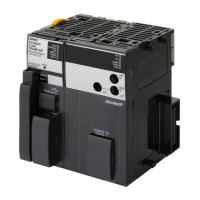
